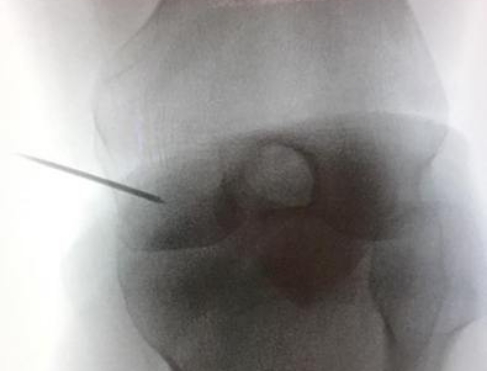Diagnostic Musculoskeletal Ultrasound Glastonbury
How We Get to the Root of the Issue

Wouldn’t it be great if you could painlessly peel back the skin and see “what’s under the hood” and figure out why you might be having pain? That’s what diagnostic musculoskeletal ultrasound in Glastonbury enables us to do in many cases! Continue reading to learn more about how we can identify all sorts of issues with this unique method.
Why Choose New England Stem Cell Institute for Diagnostic Musculoskeletal Ultrasound?
- Helps Us Identify the Root Cause of Chronic Pain
- Fast, Non-Invasive, & Accurate
- Team Led by Leading Experts
What Is a Musculoskeletal Ultrasound?

Ultrasound enables our physicians at the New England Stem Cell Institute to look at muscles, tendons, and ligaments painlessly and non-invasively, right in the office, in a matter of minutes. Tendon and ligament injuries, muscle strains, nerve entrapment, and joint swelling can all be clearly seen with diagnostic ultrasound by someone skilled in performing and interpreting the study.
At the New England Stem Cell Institute, our physicians are nationally recognized experts in diagnostic ultrasound. In fact, they teach other physicians around the country how to use it!
Diagnostic Musculoskeletal Ultrasound FAQs
How Is Diagnostic Musculoskeletal Ultrasound Different from an MRI?
Both MRI and diagnostic ultrasound (also called sonography) can produce detailed images of tissues within the human body. While MRI is the go-to diagnostic method for many doctors, sonography actually has some advantages over it, including:
- Because sonography uses sound waves instead of magnets, any patient can undergo a scan, including those with pacemakers and metal implants.
- Sonography is better for patients who struggle with claustrophobia.
- There is no need to stay perfectly still during a sonography scan. In fact, we sometimes encourage patients to move the portion of the body that we are scanning so we can gather more information about the area in question.
Do I Need to Do Anything to Prepare for My Ultrasound Appointment?
We recommend that you wear loose, comfortable clothing (depending on which area of the body is being scanned, you might need to change into a gown during your appointment). Other than that, no preparation is really necessary. Unlike with a pregnancy ultrasound, there is no need to drink a lot of water before your appointment.
What Should I Expect During My Appointment?
The ultrasound process is noninvasive, and most patients find it to be comfortable. We will have to apply a water-based gel to the area of the body we are scanning. After that, we will apply the ultrasound transducer to your skin and move it until we have gathered the information we need to diagnose your condition. Depending on the complexity of your case, the ultrasound session might last for 30 – 60 minutes. Once we are finished with the ultrasound, we will wipe off any remaining gel, and you can change back into your normal clothes (if you had to wear a gown for the scan).
Are There Any Risks or Downsides to Musculoskeletal Diagnostic Ultrasound?
There are no known risks associated with diagnostic musculoskeletal ultrasound. It is very well tolerated by most patients, and it does not require the use of any radiation. The only real disadvantage of the procedure is that the sound waves cannot penetrate through bone structures, so we cannot gather accurate information about any structures that are encased in bony tissue. (Since we focus on musculoskeletal diagnosis, this is rarely an issue. In the majority of cases, we can easily gather the information we need.)
